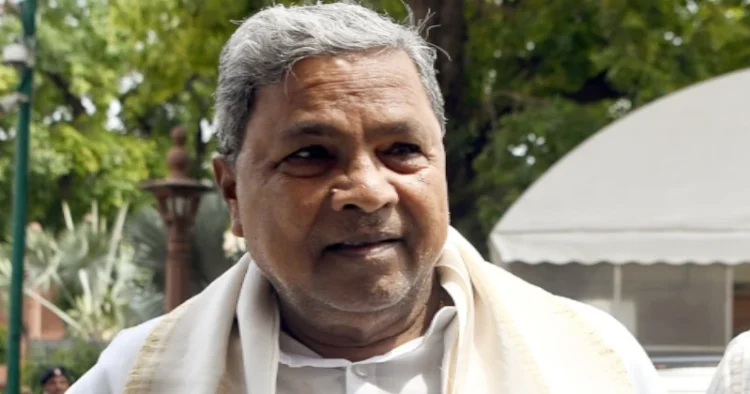Tilak is very important in the Hindu religion but few leaders don’t want to apply this. Recently, Karnataka Chief Minister Siddaramaiah refused to get tilak applied on his forehead when offered.A video was shared by BJP national spokesperson Shehzad Poonawalla on Twitter , who accused Siddaramaiah of insulting Hindus. (Note we don’t confirm the date and authenticity of this video).
After Mamata Didi now Siddharamiah refuses to put the Tilak – Like I said putting topi is ok but Tilak is not?
This is because the INDI ALLIANCE has decided in Mumbai to attack Hindus and Sanatan Dharm – From Udaynidhi Stalin to A Raja, G Parmeshwara to Priyank Kharge , from… https://t.co/QZqsOPQLJJ pic.twitter.com/NtauuaUCui
— Shehzad Jai Hind (Modi Ka Parivar) (@Shehzad_Ind) September 17, 2023
But many Hindus voted for Siddaramaiah
Cheers for those Hindus— Sima (@Dival1000) September 16, 2023
The incident has ignited a controversy, with some individuals labeling Siddaramaiah as anti-Hindu, while others argue that he is merely upholding a secular image. Siddaramaiah is not the only Congress leader to have declined the application of a tilak; Chief Minister Mamata Banerjee of West Bengal has also refrained from doing so on multiple occasions. In 2012, she declined during a religious ceremony in Varanasi, and in 2018, she did the same in Kolkata.
Not surprised to see Mamta Banerjee refusing the Hindu Tradition of applying Tilak & welcoming, but just wondering who is footing the bill at Hyatt for the I.N.D.I.A jamat?
Which State’s taxpayers?Is Tomato Soup on the menu as well? pic.twitter.com/yRe4QhtqQv
— Rupa Murthy (@rupamurthy1) September 1, 2023
Banerjee has defended her choice, stating that she is a secular leader and does not wish to be associated with any particular religion. She has clarified that she does not believe in wearing religious symbols. Nevertheless, her decision has sparked criticism from some quarters, accusing her of being anti-Hindu, while others maintain that she is simply maintaining a secular image.
Similarly, Arvind Kejriwal, the Chief Minister of Delhi, has also opted not to wear a tilak on his forehead on several occasions, expressing his disbelief in the practice of wearing religious symbols.
What is Tilak and it’s importance
Tilak is a mark on the forehead that is worn by some Hindus. It is usually made with red powder, but it can also be made with white ash or sandalwood paste. Tilak is worn for a variety of reasons, including religious devotion, cultural identification, and personal protection. In Hinduism, tilak is often associated with the goddess Lakshmi, who is said to bring wealth and prosperity. Tilak is also associated with the third eye, which is said to be a center of divine wisdom and power.
Tilak can be worn by Hindus of all ages and genders. It is often worn during religious ceremonies and festivals, but it can also be worn on a daily basis.
There are many different types of tilak, each with its own unique meaning and symbolism. Some of the most common types of tilak include:
- Tripundra: A three-lined tilak that is typically worn by Shaiva Hindus
- Urdhva Pundra: A vertical tilak that is typically worn by Vaishnava Hindus
- Ramanuja Sampradaya: A U-shaped tilak that is typically worn by followers of the Ramanuja Sampradaya
- Dattatreya Sampradaya: A horizontal tilak that is typically worn by followers of the Dattatreya Sampradaya
Tilak is a beautiful and meaningful symbol of Hindu faith and culture. It is a reminder of the divine within us all.



















Comments